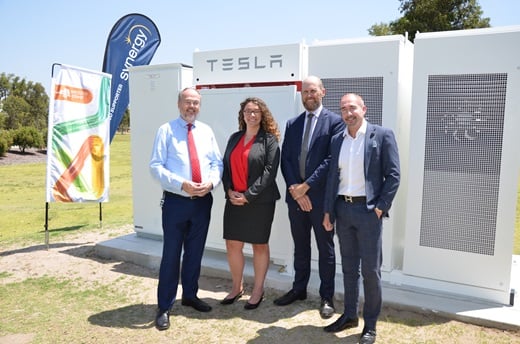
The government of Western Australia has issued a Request for Information (ROI) for parties interested in working on a 100MW / 200MWh battery energy storage project at the site of a decommissioned power station.
With rooftop solar system numbers rapidly increasing in the state, the local government led by Western Australia Premier Mark McGowan said in a statement last week that “increased pressure on WA’s electricity system and inaction could result in significant blackouts in the coming years”.
Enjoy 12 months of exclusive analysis
- Regular insight and analysis of the industry’s biggest developments
- In-depth interviews with the industry’s leading figures
- Annual digital subscription to the PV Tech Power journal
- Discounts on Solar Media’s portfolio of events, in-person and virtual
Or continue reading this article for free
As many as 50% of households could have solar on their rooftops within 10 years, the statement predicted, with up to one in three already host to their own solar PV system. The government, together with utility Synergy, which it owns, are now “exploring the opportunity” for a large-scale battery system to mitigate some of the issues. Western Australia's government earlier this year pledged to put support for solar as well as batteries and other clean energy technologies at the heart of economic recovery plans following the coronavirus pandemic.
The battery storage could help integrate renewables onto the network, improving grid security and reducing wear and tear on existing conventional generation plants – as batteries are much better at responding to fluctuations in generation from solar from rooftops or large-scale installations.
The project is set to be built at the site of Synergy’s Kwinana Power Station, and if found feasible, a contract will be awarded by May next year and the project could be operational by September 2022. AU$15 million (US$10.78 million) of Commonwealth Government funding has been initially secured to support the project.
Request for information respondents have until 28 October to get in contact with Synergy about the project. The utility said it invites the participation of “qualified and innovative organisations nationwide with experience in large-scale energy infrastructure projects,” and will be further exploring the project’s necessary functional and technical specifications, local market capabilities, possible implementation timeframes as well as associated capital costs.
Elsewhere in Australia, the Labor Party government of the Australian Capital Territory (ACT), pledged last week that if it wins upcoming elections, it will build an even bigger battery than the project Synergy and Western Australia’s own Labor Government is proposing.
The ACT in early September handed out contracts to developers of renewable energy projects with 200MW of capacity under the state’s fifth renewable energy reverse auctions. Crucially those contracts were won based on those developers including plans to also install large-scale batteries of 50MW or larger in their bids, to help with the integration of that renewable energy capacity.
Last week, the government said that it will, if re-elected in an election process that began on 28 September and ends 17 October, commit to building the ‘Big Canberra Battery’ – a distributed network of batteries build around the city adding up to 250MW of output.
“ACT Labor recognises that low-cost energy storage is the missing-link in the transition to a 100% renewable National Electricity Market,” a statement read.
“This investment will continue driving down energy costs, supporting sustainable national energy infrastructure, facilitate greater community participation in the renewables revolution and ensure economic and environmental benefits for the Territory.”
The commitment to building out that network is expected to take up to five years and be worth around AU$100 million and the government said it will “establish an expert team to lead procurement, determine suitable sites and ensure the new batteries provide the greatest economic and environmental benefits”.
A number of recent reports have highlighted these economic and environmental benefits, with a number of projects involving large-scale grid batteries as well as distributed virtual power plant networks in Australia showing success in their first years and months of operation.
